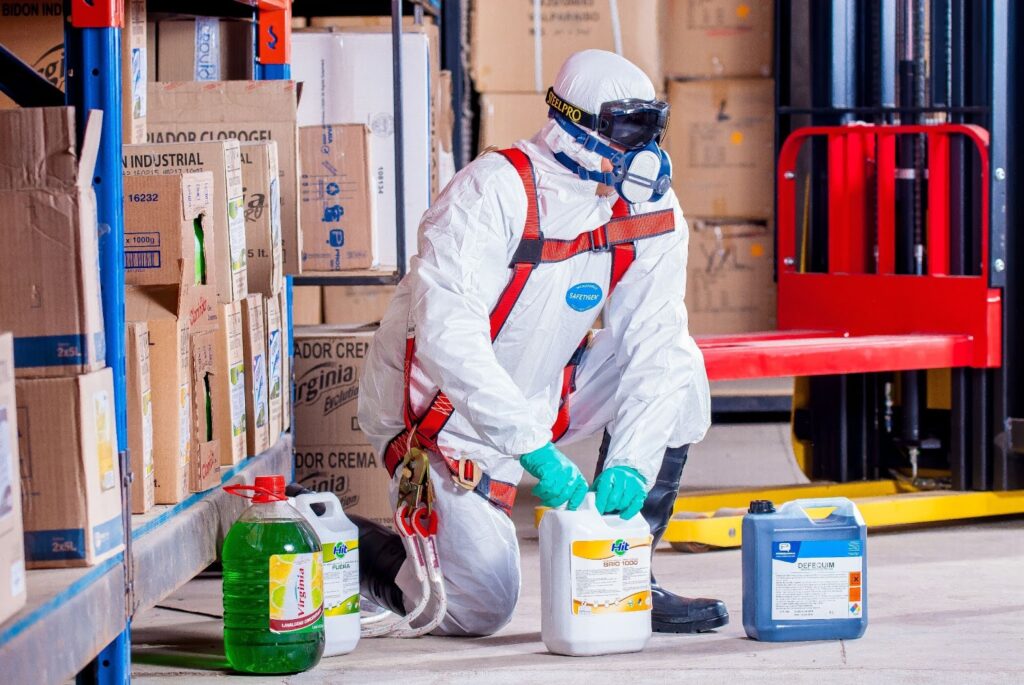How Do I Work Safely with Corrosive Storage Cabinets?

Chemical storage cabinets are an integral part of many laboratories and industrial settings. It is important to ensure that these cabinets are used safely in order to avoid potential injuries. In this blog post, we will discuss how to work safely with corrosive storage cabinets. We will cover the hazards associated with these cabinets and provide tips for safe use.
Tips for Selecting a Corrosive Storage Cabinet
It’s necessary to separate incompatible chemicals in order to follow safe storage procedures. To discover any compatibility issues, check the Safety Data Sheet (SDS) of a substance, and to ensure that end-users have access to all of the information they need, mount it on your chemical storage cabinet.
How can you protect yourself against chemical dangers while purchasing a corrosive storage cabinet? Follow these three tips from the pros.
Use Flammable Safety Cabinets If Your Corrosive Chemicals Are Also Flammable
Flammable safety cabinets are the most appropriate corrosive storage option when your corrosive chemicals are also flammable. They meet NFPA and OSHA standards, and for storing flammable liquids. These cabinets are made of steel with a powder-coated finish and feature double-wall construction with 1.5″ of insulation between the walls. The doors on flammable safety cabinets are self-closing and have a three-point latching system.
Use Polyethylene Cabinets When Your Corrosive Chemicals Are Not Flammable
Polyethylene cabinets are a good choice when your corrosive chemicals are not flammable. These cabinets are made of high-density polyethylene with a smooth, easy-to-clean surface. The doors on polyethylene cabinets have a two-point latching system, and spill trays are easily removed.
Use Wooden Cabinets with a Laminate Finish for Chemical Durability
Wooden cabinets with a laminate finish are also an option for corrosive storage. These cabinets are made of wood with a laminate finish that is chemical resistant. The doors on wooden cabinets with a laminate finish have a three-point latching system and stainless steel hinges for added durability.
Things to Consider When Choosing a Corrosive Storage Cabinet
When looking for corrosive storage cabinets, there are a few things you need to take into consideration. Here are some elements to think about when making your decision:
Cabinet Design
The corrosive storage cabinet you choose should be made of acid-resistant materials. The most popular choice is polyethylene, as it is strong and durable. Other options include stainless steel or fibreglass, but these can be more expensive. The cabinet should also have double-wall construction and tight-fitting doors to prevent any corrosive fumes from escaping.
Ventilation
The corrosive storage cabinet you choose must have proper ventilation. This will allow any fumes to be properly dissipated and prevent them from building up inside the cabinet.
Safety Features
The corrosive storage cabinet you choose should have several safety features to protect both you and your employees. These features can include acid-resistant gloves, aprons, and face shields.
Cabinet Location
When choosing a corrosive storage cabinet, you also need to consider where it will be located. The cabinet should be in an area where it can be easily accessed, but not in a high-traffic area. It is also important to make sure the cabinet is away from any ignition sources.
It is also important not to overfill them. This can create a safety hazard and cause the corrosive materials to spill out. Be sure to keep your corrosive storage cabinet well-organised and only store the amount of material you need.
Keep escape paths clear in the event of a fire. When it comes to corrosive storage cabinets, safety should be your number one priority. By taking the time to consider these factors, you can ensure that you put your storage cabinet in the safest place possible.
Cabinet Capacity
When choosing corrosive storage cabinets, you need to consider the capacity of the cabinet. This will ensure that you have enough space to store all of your corrosive materials.
Cabinet Size
The size of the corrosive storage cabinet is another important factor to consider. The cabinet should be large enough to hold all of your corrosive materials, but not so large that it takes up too much space in your facility. Regulations limit the size of corrosive storage cabinets, so be sure to check with your local authorities before making a purchase.
Incompatible Dangerous Goods
You also need to make sure that you do not store incompatible dangerous goods in the same corrosive storage cabinet. This can create a chemical reaction that could be hazardous to your employees, by releasing corrosive and toxic fumes into the air.
Signage
Make sure the corrosive storage cabinet you choose is properly labelled with the appropriate signage. This will ensure that everyone in your facility knows that it is a corrosive storage cabinet and what type of corrosive material is stored inside.
Regulations and codes vary from state to state, so it is important to consult with your local authorities before purchasing a corrosive storage cabinet. Corrosive storage cabinets must be marked with:
- Cabinet manufacturer
- Maximum storage capacity
- A dangerous goods symbol of appropriate size
Summary
While it is important to take the necessary precautions when working with corrosive storage cabinets, selecting the right cabinet can make your work easier and safer. By understanding the different factors you need to consider when making your selection, as well as following some simple safety tips, you can ensure that your corrosive chemicals are safely stored. If you have any questions about corrosion-resistant storage cabinets or would like more information on how we can help you select the perfect cabinet for your needs, please do not hesitate to contact us today.
